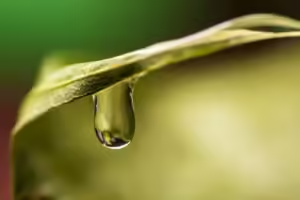Imagine a garden full of life right in the middle of a very hot desert. You have got those colorful cacti blooming. Succulents seem to sparkle under the sun. Native shrubs bring in all sorts of pollinators. Desert gardening is not just about scraping by in tough conditions. It is about truly thriving. It means making the most of what you have. So, this guide has got your back. It is packed with practical, science-based tips for growing desert biome flora sustainably. We are talking about creating a garden that not only saves water but also boosts the local ecosystem. Whether you are just starting out, maybe planting your first cactus, you are in the right place. If you are someone who is really into eco-friendly living and thinking about a xeriscaped yard, you are in the right place.
You will find straightforward tips, ecological insights, and expert advice. All aimed at helping you succeed. Ready to see how we can flip the challenges of dry climates into chances for sustainable growth? Let’s dive in!

Understanding Desert Biome Flora
Desert plants have developed extraordinary traits that help them withstand in harsh conditions. For example, cactuses store water in their thick stems and use thorns to protect themselves from predators. Succulents do something similar, storing water in their fleshy leaves. Many desert plants have shallow roots that quickly soak up rainwater. Others, such as mesquite trees, send deep roots into the earth to tap underground water sources. These plants also protect themselves from the sun. They have waxy surfaces that reflect sunlight, so they lose less moisture. Some plants even “sleep” during the hottest parts of the day to save energy. It is not surprising that desert vegetation thrives in areas where other plants are unable to do this.
Common Misconceptions
- Myth: All desert plants are cacti.
Fact: While cacti are prominent, desert flora include diverse species like succulents, shrubs, and trees, each with unique adaptations. - Myth: Desert gardens lack color and variety.
Fact: Many desert plants, like desert marigold and ocotillo, produce vibrant flowers, offering year-round visual appeal. - Myth: Desert gardening is too expensive.
Fact: Once established, native desert gardens are low-maintenance and cost-effective, especially in water savings.
Ecological Role of Desert Flora
Desert plants play a crucial role in their ecosystems—you can not underestimate their importance. Their roots dig deep into the soil, helping to hold everything together and keep erosion at bay, especially when the winds whip up or the rains come pouring down. For example, grasses and shrubs like brittlebush (Encelia farinosa) are quite good at anchoring sandy soils. This anchoring helps lessen the harsh effects of relentless desert winds. Plus, these plants are not just sitting there looking pretty—they also provide food and shelter for all sorts of wildlife. The saguaro cactus is a prime example. It serves as a little hotel for birds, such as the Gila woodpecker. It also offers up fruit for bats and other critters.
Now, when it comes to the carbon cycle, desert flora do their part, too, even if it is on a smaller scale compared to forests. By keeping the soil stable, they help lock away carbon dioxide. This action stops it from escaping back into the atmosphere. It is super helpful for climate regulation. Also, these plants are on the front lines fighting desertification, which is that process where once-fertile land turns into desert due to drought or human activities. Desert plants hold on to soil moisture. They keep the structure intact. These actions really boost the resilience of their ecosystems. They can even help restore areas that have been degraded.
Challenges in Growing Desert Plants
1. Water scarcity
Water scarcity is the biggest challenge in growing desert plants. Deserts receive little rainfall and evaporation is high. If you live outside the desert, finding the right type of soil may be a challenge. Desert plants need well-drained soil to keep water from logging up.
2. Climate Change and Its Effects
Climate change comes with another challenge. Urbanization, excessive farming, and expansion of agricultural land put a lot of pressure on native desert vegetation. However, with the proper techniques, you can grow these plants sustainably, by maintaining their beauty while saving water.
Growing Techniques for Desert Plants

To grow desert biome flora vegetation sustainably, you should focus on water conservation. One of the highly effective method is drip irrigation. This method allows water to reach the roots directly, reducing evaporation. Moreover, mulching around the plants helps retain moisture in the soil. You can use gravel or organic mulch to keep the ground cool and prevent water from running off.
Choosing native plants is another smart strategy. Desert plants naturally found in your area require little maintenance and water. For example, cacti and succulents thrive with little care. You should also consider rainwater harvesting, which allows you to collect and store water for use during dry periods.
Major sustainable technologies:
1. Drip irrigation
Drip irrigation is a great way to save water while providing your plants with the water they need. This system delivers water directly to the roots through a network of tubes and emitters, minimizing evaporation and runoff. This is especially beneficial in desert gardening, where water is precious. By using drip irrigation, you can significantly reduce water use while increasing healthy plant growth.
2. Mulching
Mulching is a very effective gardening technique that can greatly benefit your desert plants. Applying a layer of organic or inorganic material such as wood chips, straw, or gravel on top of the soil, you help retain moisture and regulate temperature. This is especially essential in dry environments where water evaporation is high. Mulch acts like a protective blanket, keeping the soil cool in the heat and preventing weeds from growing.
3. Selection of local plants
Choosing local plants for your garden is a great way to create a rich ecosystem while saving water. Native plants are adapted to the climate and soil conditions of your area, making them easier to grow and maintain. They require less water and care than non-native species, as they are already equipped to handle local weather fluctuations.
Popular Desert Plants for Sustainable Gardening
Desert biome flora are not just important for the survival, but they also add charm and beauty to our garden. Here are some plants that can thrive in dry conditions and offer unique benefits:
1. Cactus
With their distinctive shape and vibrant flowers, cactus require very little water, and they can prevent soil erosion with their root system.
2. Succulent Plants
These plants store water in their thick leaves, making them ideal for water saving gardening. Succulent plants come in a variety of shapes and colors, adding visual interest to our garden.
3. Desert Marigold
This bright yellow flower thrives in desert climates and attracts pollinators like bees and butterflies.
4. Aloe Vera
Known for its medicinal properties, aloe vera is a hardy plant that grows well in dry environments.
Growing Desert Flora at Home
Creating a desert garden that is both eco-friendly and satisfying? Absolutely doable! Seriously, it is all about picking the right plants that thrive in arid conditions. Local plants are our best bet. Using water-saving techniques can really improve our garden. Methods like drip irrigation and xeriscaping are both effective and environmentally friendly.
Now, I get it—there are challenges like heat and pesky critters. But with some thoughtful planning, you can tackle those issues head-on. Just look at the Xeriscape Demonstration Garden in Surprise, Arizona. It is a fantastic example of how desert biome flora can flourish while conserving water and supporting local wildlife.
So, why not kick things off with something simple? Try planting a local favorite, like a prickly pear cactus, and set up a straightforward drip irrigation system. If you need some guidance, visit local spots like the Desert Botanical Garden. The University of Arizona Cooperative Extension also has loads of great advice.
Honestly, your sustainable desert garden is just waiting to be started—so why not dive in today? You will be amazed at how your dry space can really come to life!
FAQs
1. Can I grow desert plants indoors?
Yes, desert plants like succulents and cactus grow well indoors. Make sure your plants get enough sunlight and don’t overwater them.
2. How often should I water my desert plants?
Water your plants only when the soil feels completely dry. Desert plants are very drought tolerant and prefer less water.
3. What is the best soil for desert plants?
Soil with good drainage is ideal for desert plants. Incorporating sand or gravel can increase drainage in your soil mix.
4. Can I grow desert plants in a humid climate?
Yes, you can do this, provided you provide the right soil and drainage conditions. Moisture will not harm the plants as long as the roots do not stay in the water.




